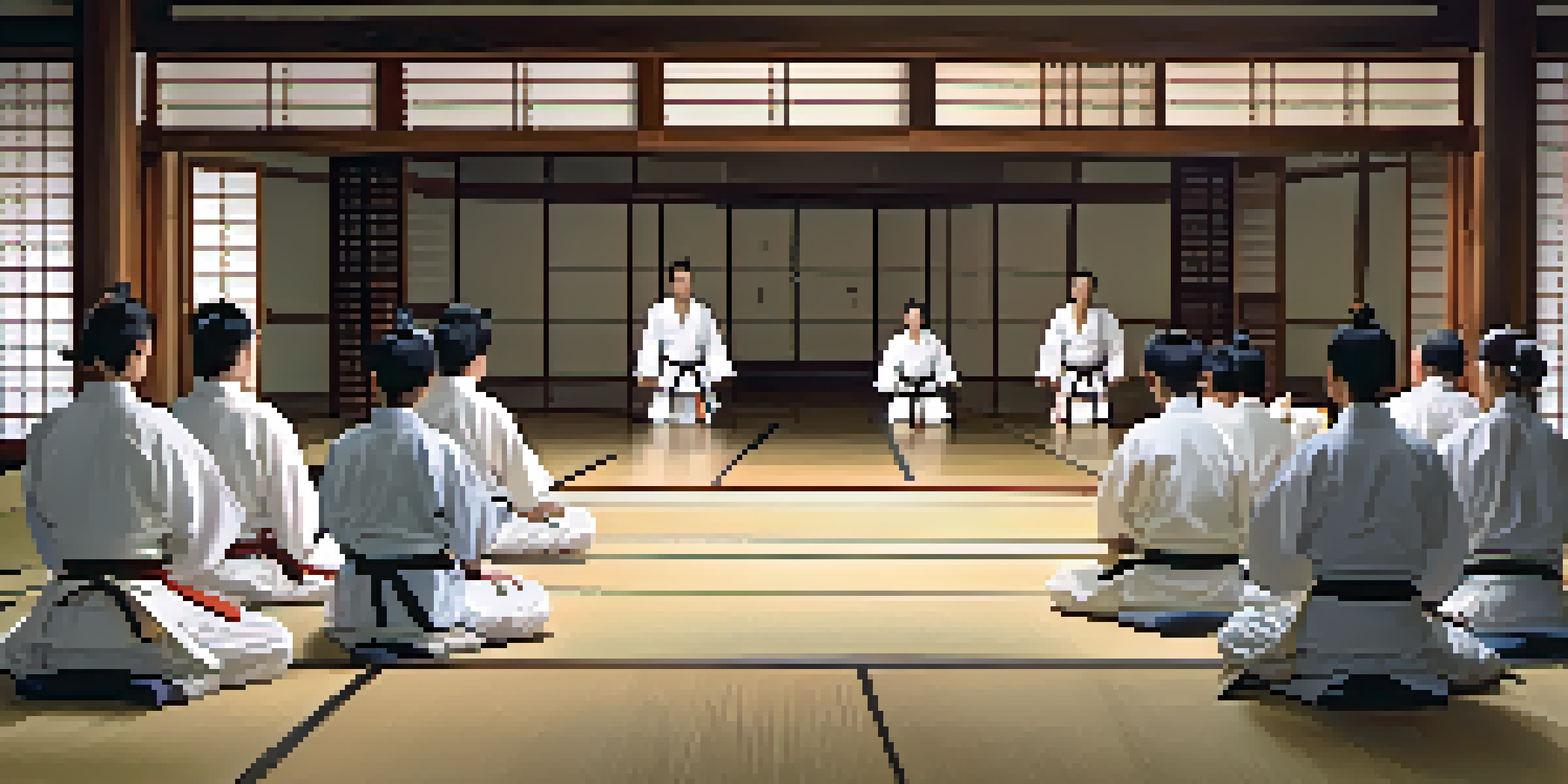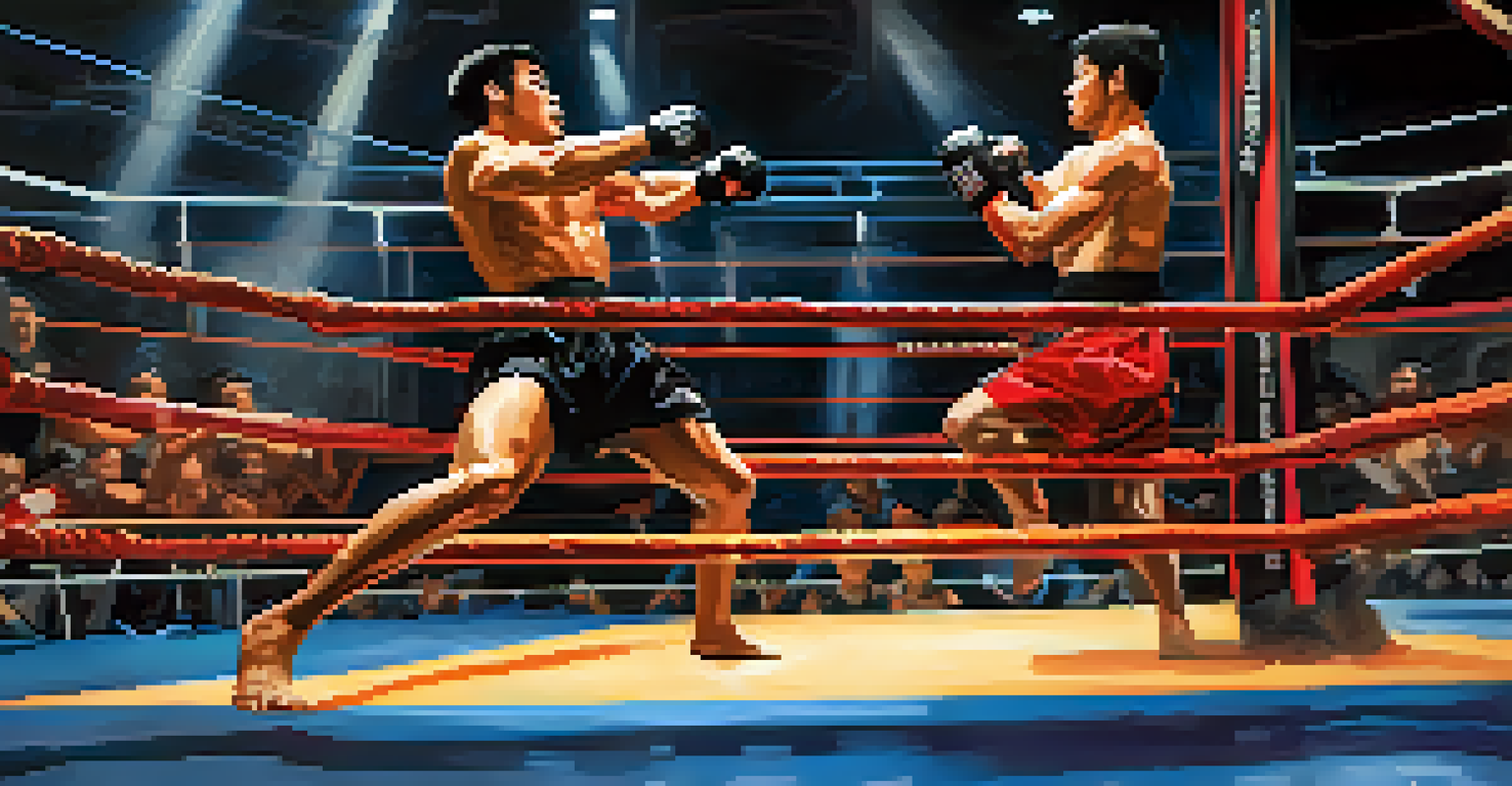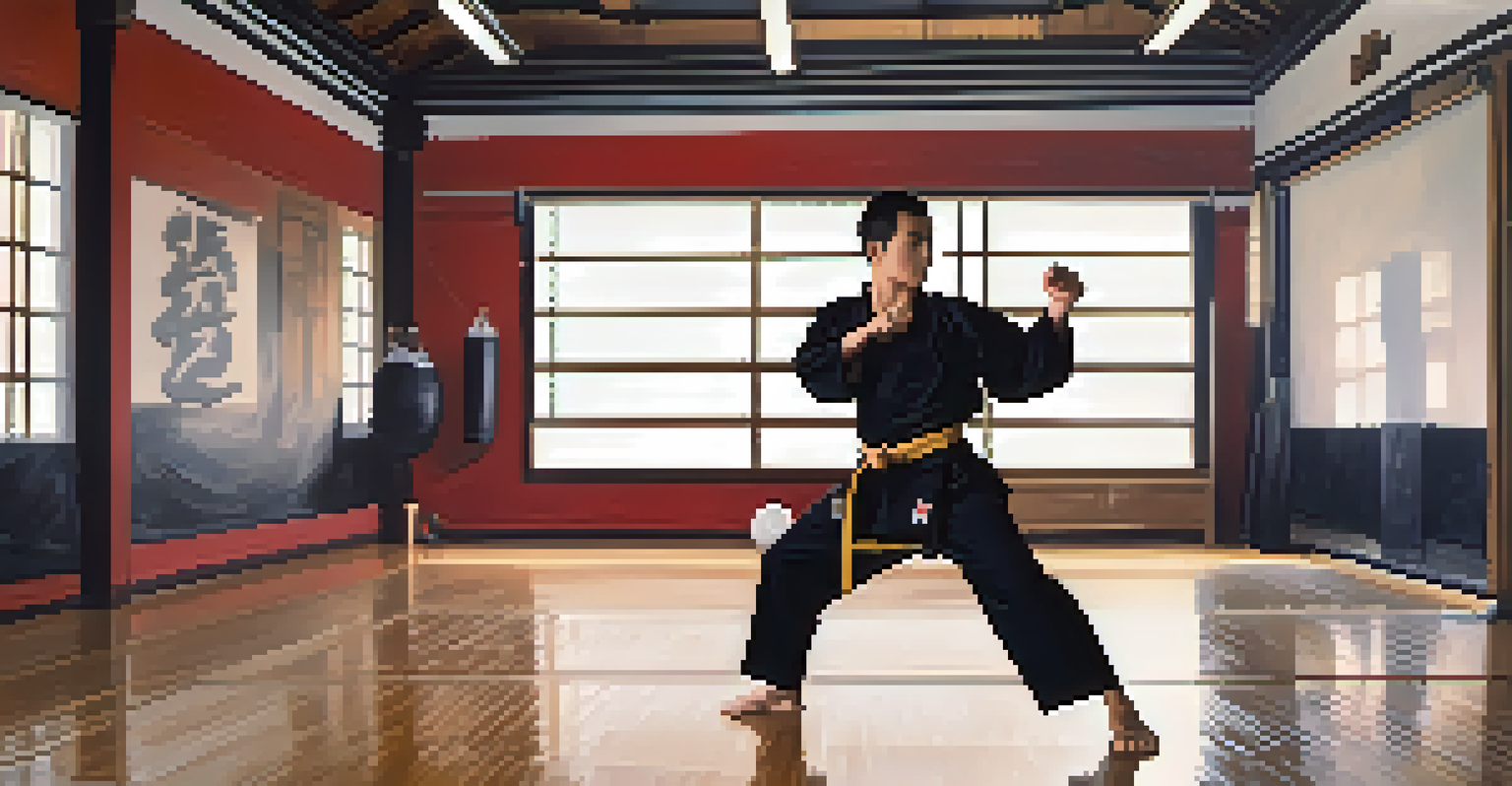Key Differences Between Traditional and Modern Martial Arts Tournaments

Definition and Origins of Traditional Martial Arts Tournaments
Traditional martial arts tournaments often trace their roots back centuries, celebrating specific cultural practices and philosophies. These events are steeped in history, emphasizing etiquette, respect, and the preservation of ancient techniques. For instance, disciplines like Karate and Taekwondo have tournament formats that reflect their historical origins.
Martial arts are a way of life, a philosophy, and a path to personal growth, not just a method of fighting.
Competitors in these tournaments typically wear traditional uniforms and perform prescribed katas or forms, showcasing their skills in a structured environment. The focus is not just on winning but on demonstrating mastery over the art and honoring its traditions. This creates a sense of community among participants, fostering respect for both the sport and its history.
Judging in traditional tournaments may rely heavily on subjective criteria, rewarding competitors for their technique and adherence to style. This can lead to discussions about fairness and consistency, as different judges may interpret the rules differently. Overall, traditional tournaments prioritize the art's core values, making them unique in the martial arts landscape.
Modern Martial Arts Tournaments: An Overview
Modern martial arts tournaments, in contrast, have evolved to meet contemporary standards, often prioritizing entertainment and audience engagement. These events can be more dynamic, featuring a mix of striking and grappling styles that appeal to a broader audience. Popular formats include mixed martial arts (MMA) and point fighting, which focus on fast-paced competition.

In these tournaments, the rules are designed to encourage action and excitement, leading to a more unpredictable and thrilling experience. Fighters often compete in cages or rings, and the emphasis is on showcasing athleticism and skill. This shift has attracted not only martial artists but also fans looking for an exciting sporting event.
Traditional vs. Modern Tournaments
Traditional martial arts tournaments emphasize cultural heritage and technique, while modern tournaments prioritize entertainment and dynamic competition.
Judging in modern tournaments tends to be more objective, utilizing point systems and timers to ensure fairness and transparency. Competitors are often rewarded not just for technique but also for aggression and control, which can lead to a different set of strategies and training focuses. This new approach keeps the spirit of competition alive while making the events more accessible to newcomers.
Scoring Systems: Traditional vs. Modern Approaches
The scoring systems in traditional martial arts tournaments often emphasize technique and precision over aggression. Judges score competitors based on their ability to accurately perform katas or engage in controlled sparring, with points awarded for form, timing, and control. This method can lead to a more nuanced evaluation of skill.
The ultimate aim of martial arts is not having to use them, but to cultivate a sense of discipline and respect that carries into all aspects of life.
Conversely, modern tournaments often employ a point-based system where points are awarded for successful strikes or submissions, emphasizing the effectiveness of attacks. This can lead to a more straightforward understanding of who is winning, as spectators can easily follow the score. The fast-paced nature of these tournaments often results in a higher volume of scoring opportunities.
These differing approaches to scoring reflect the broader philosophies of each tournament type. Traditional tournaments value the art and history behind martial arts, while modern tournaments prioritize the excitement and athleticism of competition. Each system has its merits, catering to different audiences and enhancing the martial arts experience.
Cultural Significance in Traditional Martial Arts Tournaments
In traditional martial arts tournaments, cultural significance plays a pivotal role in shaping the event. Competitors often engage in rituals, such as bowing to judges and performing opening ceremonies, which reflect their respect for the art. This cultural aspect creates a deeper connection between participants and their martial heritage.
Many traditional tournaments also serve as a way to preserve and promote cultural practices, as they often include demonstrations of historical techniques and philosophies. These events can be a celebration of a community's identity, showcasing not just the competitive aspect but also the art's roots and its evolution over time. This adds a layer of meaning to the competition.
Diverse Training Approaches
Training for traditional tournaments focuses on mastering specific techniques and discipline, whereas modern training blends various styles for adaptability.
In contrast, modern tournaments may prioritize entertainment value over cultural rituals, potentially overshadowing the historical context of the martial arts. While they can still celebrate the sport, the focus is often on the fighters and their performances rather than the art itself. This shift may resonate more with a global audience but could lead to a disconnect from the traditions that shaped these martial arts.
Training Approaches: Traditional vs. Modern Preparation
Training for traditional martial arts tournaments often focuses on mastering specific techniques, forms, and sparring practices. Students might spend years perfecting their skills, with an emphasis on discipline and respect for their instructors. This method fosters a deep understanding of the art and its philosophies, preparing them for competition.
In contrast, training for modern tournaments typically includes a more diverse range of techniques, blending various martial arts styles to enhance adaptability and effectiveness in the ring. Fighters often engage in intense physical conditioning, emphasizing strength, speed, and endurance to meet the demands of fast-paced competition. This approach may attract individuals looking for a more comprehensive fighting skill set.
These differing training philosophies reflect the goals of each tournament type. Traditional training nurtures respect for the art and its history, while modern training focuses on practical application and versatility. Each path offers unique benefits, allowing practitioners to choose what aligns best with their personal goals.
Audience Engagement: Traditional vs. Modern Spectator Experience
The audience experience at traditional martial arts tournaments tends to be more subdued, with an emphasis on respect and focus during performances. Spectators often appreciate the artistry and cultural significance of the matches, creating a contemplative atmosphere. This can be especially engaging for those who value the history and tradition behind the martial arts.
In contrast, modern tournaments are often designed to entertain, with vibrant atmospheres filled with music, commentary, and fan engagement. The fast-paced action keeps spectators on the edge of their seats, leading to a more interactive and thrilling experience. Fans are often encouraged to cheer and react, creating a lively environment that enhances the excitement of the competition.
Audience Engagement Styles
Traditional tournaments foster a respectful and contemplative atmosphere, while modern events create an interactive and thrilling experience for spectators.
These differences in audience engagement reflect the distinct goals of traditional and modern tournaments. While traditional events celebrate the art form and its cultural roots, modern tournaments prioritize entertainment and athleticism. Each experience caters to different audiences, enriching the martial arts community as a whole.
Conclusion: The Future of Martial Arts Tournaments
As martial arts continue to evolve, the differences between traditional and modern tournaments will likely persist, each catering to distinct audiences and philosophies. The coexistence of both types offers a rich tapestry of experiences for practitioners and fans alike. By embracing these differences, the martial arts community can foster growth and innovation while honoring its roots.
Looking ahead, we may see an increased blending of traditional and modern elements, as competitors and instructors seek to bridge the gap between styles. This could lead to new tournament formats that incorporate the best of both worlds, appealing to a broader audience. Such developments may enhance the appreciation for martial arts as both an art form and a competitive sport.

Ultimately, whether one prefers the historical depth of traditional tournaments or the energetic thrill of modern events, the essence of martial arts remains the same: discipline, respect, and the pursuit of excellence. As the landscape of martial arts tournaments evolves, practitioners will continue to find ways to honor their heritage while embracing new challenges.